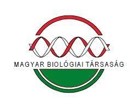Két hazai kétéltűfaj kitridiomikózissal szembeni fogékonysága és érzékenysége
Absztrakt
A kétéltűeket veszélyeztető kitridiomikózis kórokozója, a Batrachochytrium dendrobatidis (Bd; Longcore, Pessier & D. K. Nichols, 1999) nevű gombafaj bizonyítottan jelen van a Kárpát-medencében is, ugyanakkor a számlájára írható drasztikus állománycsökkenést itt ez idáig nem tapasztaltunk. Ennek egyik oka lehet a honos populációk magas toleranciája a betegséggel szemben. Kísérletünkben barna varangy és erdei béka ebihalait fertőztük egy magas virulenciájú Bd törzzsel. A gomba egyik fajnál sem csökkentette a túlélést, a fejlődési sebességet és az átalakulás utáni tömeget. Ugyanakkor a barna varangy egyedeknél az erdei békáknál mért fertőzöttség sokszorosát figyeltük meg. Úgy tűnik, hogy a hazai barna varangy populációk magas toleranciával, az erdei béka populációk pedig magas rezisztenciával rendelkeznek a betegséggel szemben.
Hivatkozások
Baláž, V., Vörös, J., Civiš, P., Vojar, J., Hettyey, A., Sós, E., Dankovics, R., Jehle, R., Christiansen, D. G., Clare, F., Fisher, M. C., Garner, T. W. J. & Bielby, J. (2014): Assessing Risk and Guidance on Monitoring of Batrachochytrium dendrobatidis in Europe through Identification of Taxonomic Selectivity of Infection. – Conserv. Biol. 28: 213–223. doi: http://dx.doi.org/10.1111/cobi.12128
Berger, L., Speare, R., Daszak, P., Green, D. E., Cunningham, A. A., Goggin, C. L., Slocombe, R., Ragan, M. A., Hyatt, A. D., McDonald, K. R., Hines, H. B., Lips, K. R., Marantelli, G. & Parkes, H. (1998): Chytridiomycosis causes amphibian mortality associated with population declines in the rain forests of Australia and Central America. – Proc. Natl. Acad. Sci. 95: 9031–9036.
Bosch, J. & Martínez-Solano, I. (2006): Chytrid fungus infection related to unusual mortalities of Salamandra salamandra and Bufo bufo in the Penalara Natural Park, Spain. – Oryx 40: 84–89.
Bosch, J., Martı́nez-Solano, I. & Garcı́a-Parı́s, M. (2001): Evidence of a chytrid fungus infection involved in the decline of the common midwife toad (Alytes obstetricans) in protected areas of central Spain. – Biol. Conserv. 97: 331–337. doi: http://dx.doi.org/10.1016/S0006-3207(00)00132-4
Boyle, D. G., Boyle, D. B., Olsen, V., Morgan, J. A. T. & Hyatt, A. D. (2004): Rapid quantitative detection of chytridiomycosis (Batrachochytrium dendrobatidis) in amphibian samples using real-time Taqman PCR assay. – Dis. Aquat. Organ. 60: 141–148. doi: http://dx.doi.org/10.3354/dao060141
Garner, T.W.J., Walker, S., Bosch, J., Leech, S., Marcus Rowcliffe, J., Cunningham, A. A. & Fisher, M. C. (2009): Life history tradeoffs influence mortality associated with the amphibian pathogen Batrachochytrium dendrobatidis. – Oikos 118: 783–791. doi: http://dx.doi.org/10.1111/j.1600-0706.2008.17202.x
Gosner, K. L. (1960): A Simplified Table for Staging Anuran Embryos and Larvae with Notes on Identification. – Herpetologica 16: 183–190.
Mendelson, J. R., Lips, K. R., Gagliardo, R. W., Rabb, G. B., Collins, J. P., Diffendorfer, J. E., Daszak, P. D. R. I., Zippel, K. C., Lawson, D. P., Wright, K. M., Stuart, S. N., Gascon, C., Silva, H. R. da, Burrowes, P. A., Joglar, R. L., Marca, E. L., Lötters, S., Preez, L.H. du, Weldon, C., Hyatt, A., Rodriguez-Mahecha, J. V., Hunt, S., Robertson, H., Lock, B., Raxworthy, C. J., Frost, D. R., Lacy, R. C., Alford, R. A., Campbell, J. A., Parra-Olea, G., Bolaños, F., Domingo, J. J. C., Halliday, T., Murphy, J. B., Wake, M. H., Coloma, L. A., Kuzmin, S. L., Price, M. S., Howell, K. M., Lau, M., Pethiyagoda, R., Boone, M., Lannoo, M. J., Blaustein, A. R., Dobson, A., Griffiths, R. A., Crump, M. L., Wake, D. B. & Brodie, E. D. (2006): Confronting Amphibian Declines and Extinctions. – Science 313: 48–48. doi: http://dx.doi.org/10.1126/science.1128396
Skerratt, L. F., Berger, L., Speare, R., Cashins, S., McDonald, K. R., Phillott, A. D., Hines, H. B.& Kenyon, N. (2007): Spread of Chytridiomycosis Has Caused the Rapid Global Decline and Extinction of Frogs. – EcoHealth 4: 125. doi: http://dx.doi.org/10.1007/s10393-007-0093-5
Van Rooij, P., Martel, A., Haesebrouck, F. & Pasmans, F. (2015): Amphibian chytridiomycosis: a review with focus on fungus-host interactions. – Vet. Res. 46: 137. doi: http://dx.doi.org/10.1186/s13567-015-0266-0
Woodhams, D. C., Bosch, J., Briggs, C. J., Cashins, S., Davis, L. R., Lauer, A., Muths, E., Puschendorf, R., Schmidt, B. R., Sheafor, B. & Voyles, J. (2011): Mitigating amphibian disease: strategies to maintain wild populations and control chytridiomycosis. – Front. Zool. 8: 8. doi: http://dx.doi.org/10.1186/1742-9994-8-8
http1: http://www.bd-maps.net/surveillance/, utolsó megtekintés időpontja: 2017.03.16.






